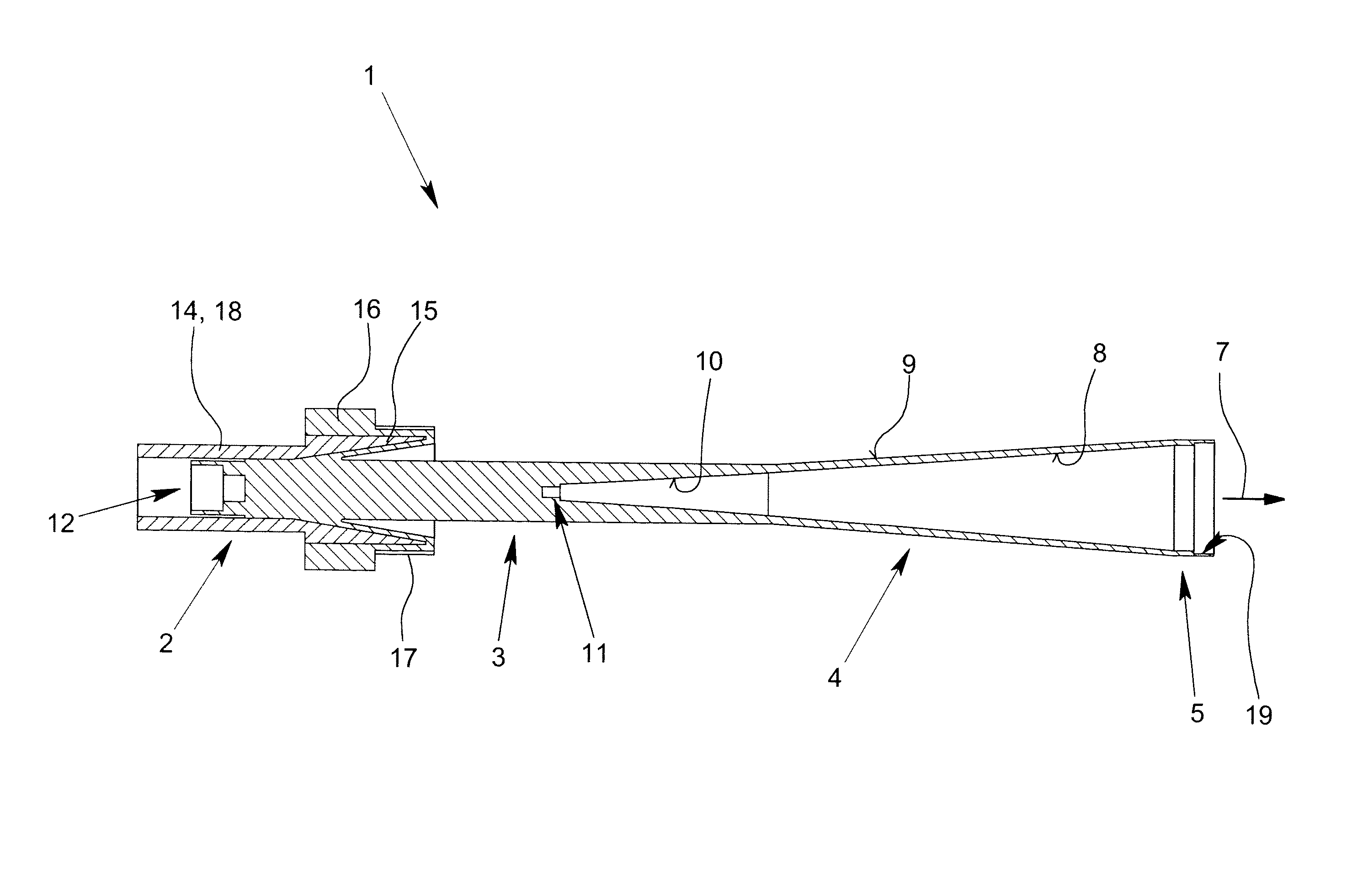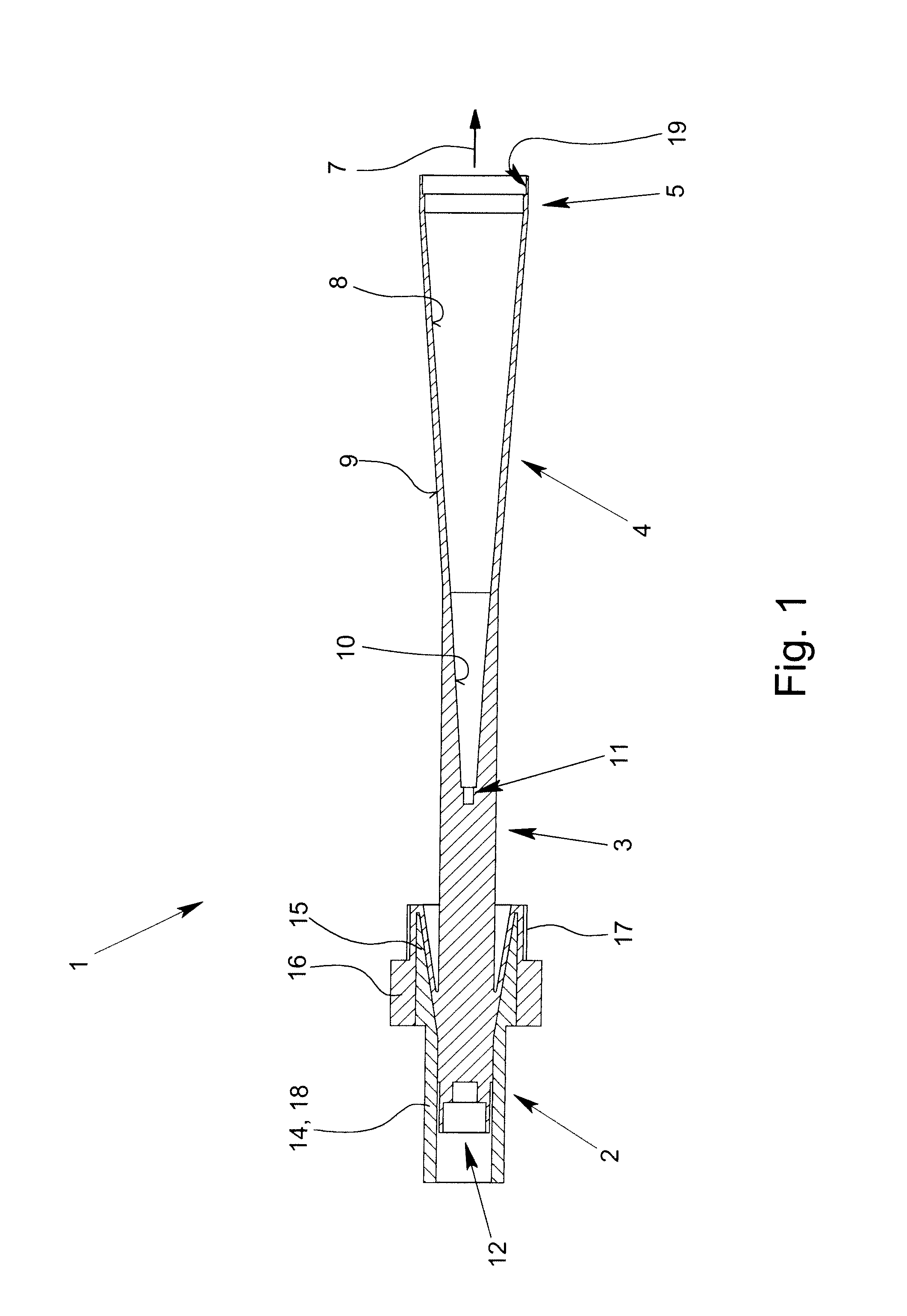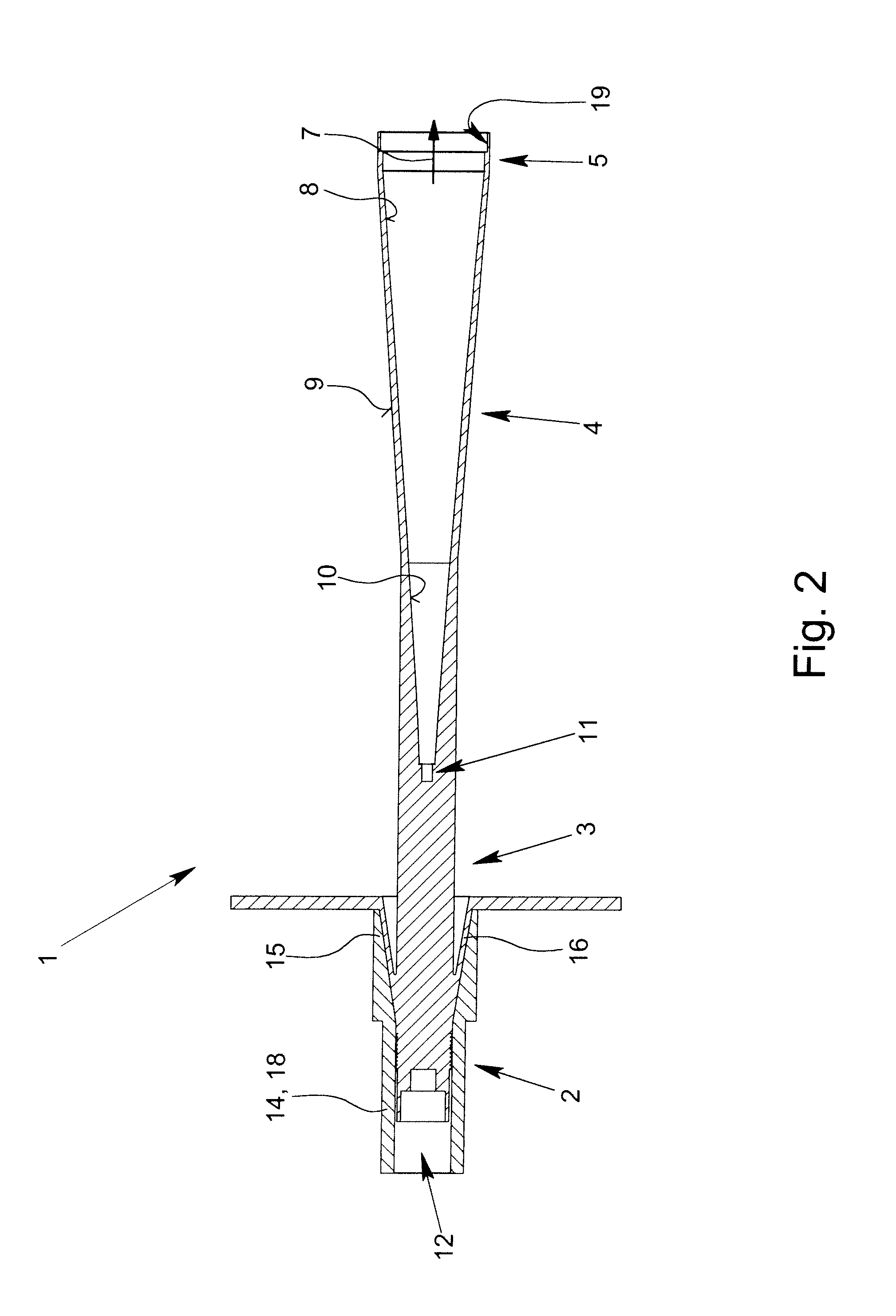Dielectric antenna
a technology of dielectric antennas and antennas, applied in the direction of leaky waveguide antennas, waveguide horns, electrical equipment, etc., can solve the problems of directivity reduction and phase front warping, and achieve the effect of high bundling
- Summary
- Abstract
- Description
- Claims
- Application Information
AI Technical Summary
Benefits of technology
Problems solved by technology
Method used
Image
Examples
Embodiment Construction
[0027]Cross-sections of complete dielectric antennae 1 are represented in FIGS. 1 and 2, which have a dielectric feeding section 2, a first transition section 3 comprising a dielectric rod, a dielectric emitting section 5 and, a further, second transition section 4 forming a dielectric horn, wherein the feeding section 2 can be struck with electromagnetic radiation 6, electromagnetic radiation 6 can be guided with the first transition section 3 and the second transition section 4 and electromagnetic radiation can be emitted from the emitting section 5 as airborne waves.
[0028]All of the dielectric antennae 1 shown in FIGS. 1 to 3—more or less true to detail—are characterized in that the emitting section 5 is designed as a dielectric tube connected to the second transition section 4. This measure achieves that the length of the dielectric antennae can be varied in large areas, namely using different choices of the length of the first transition section 3 including the dielectric rod a...
PUM
 Login to View More
Login to View More Abstract
Description
Claims
Application Information
 Login to View More
Login to View More - R&D
- Intellectual Property
- Life Sciences
- Materials
- Tech Scout
- Unparalleled Data Quality
- Higher Quality Content
- 60% Fewer Hallucinations
Browse by: Latest US Patents, China's latest patents, Technical Efficacy Thesaurus, Application Domain, Technology Topic, Popular Technical Reports.
© 2025 PatSnap. All rights reserved.Legal|Privacy policy|Modern Slavery Act Transparency Statement|Sitemap|About US| Contact US: help@patsnap.com



